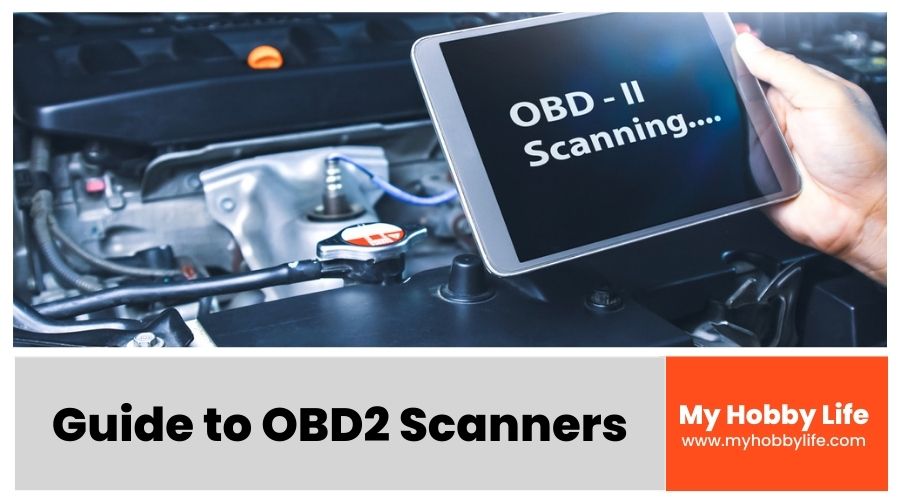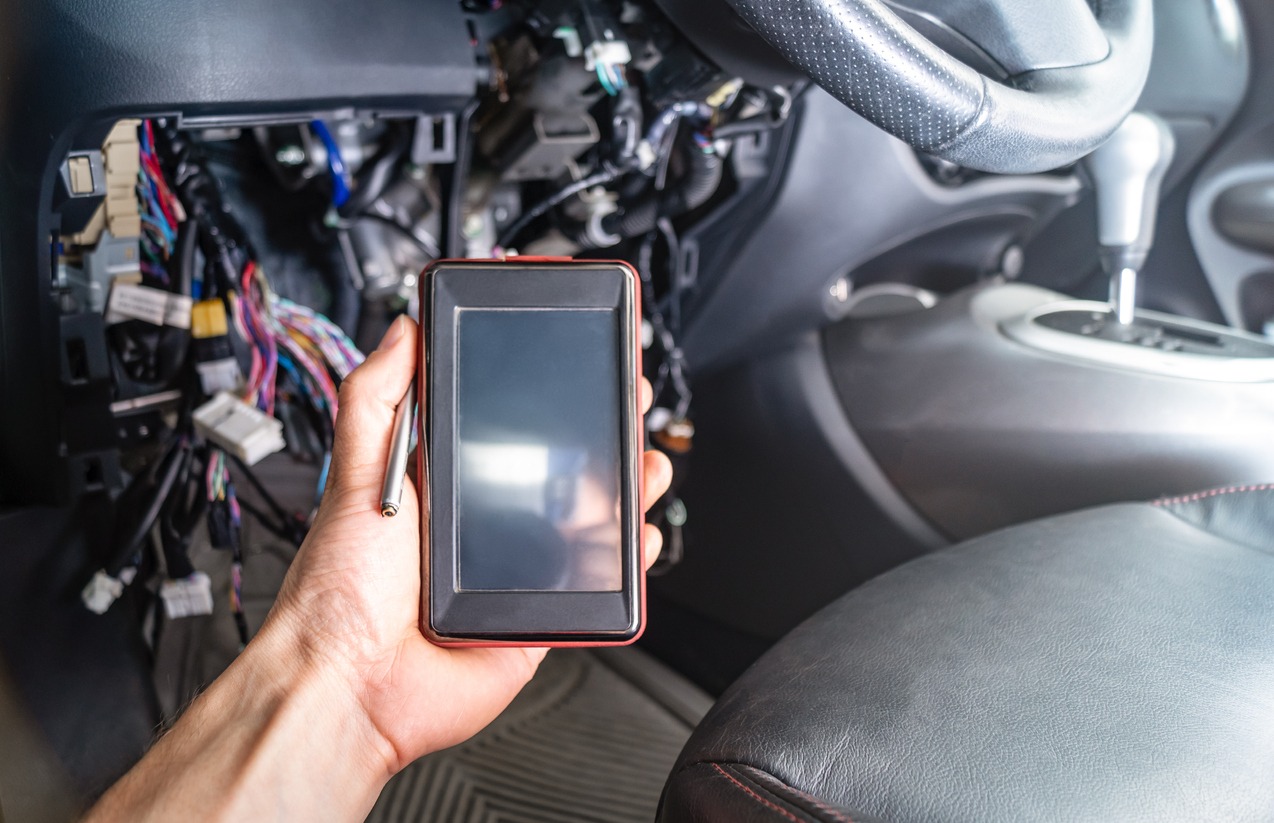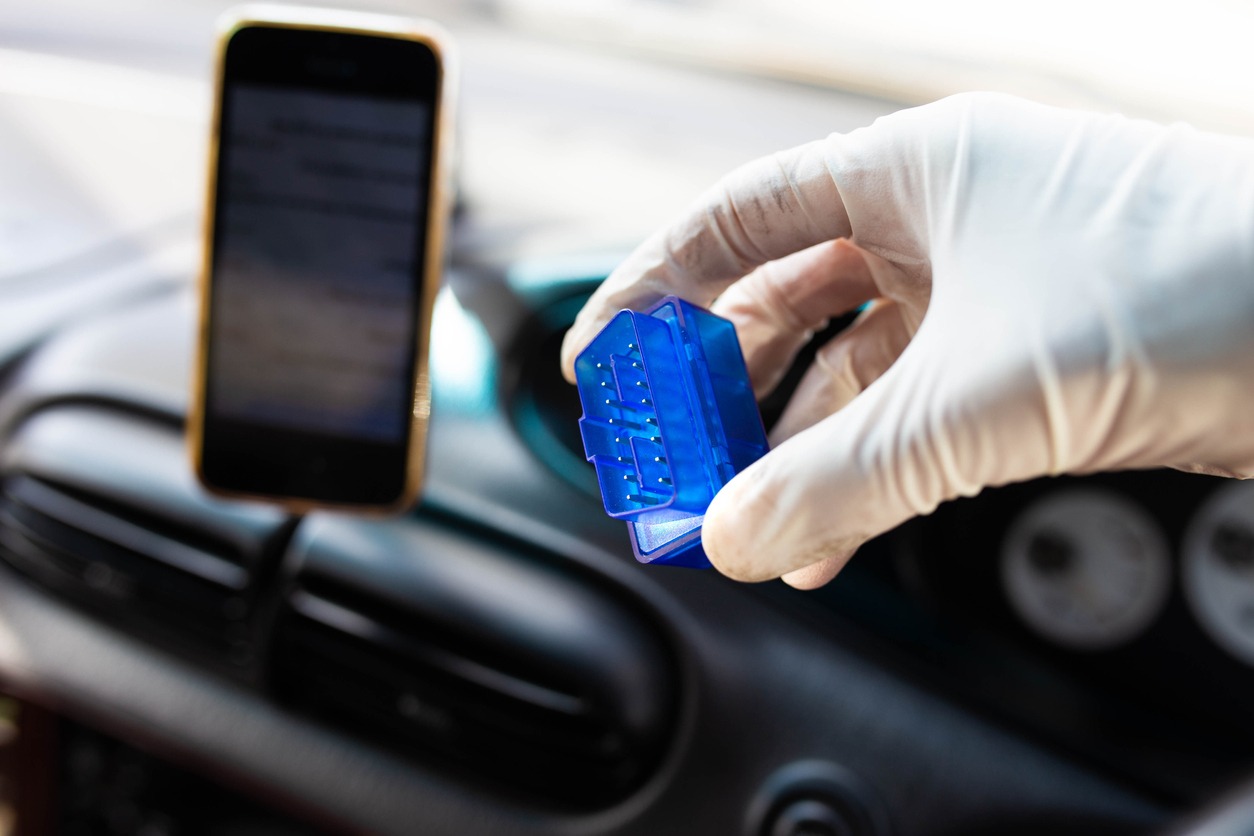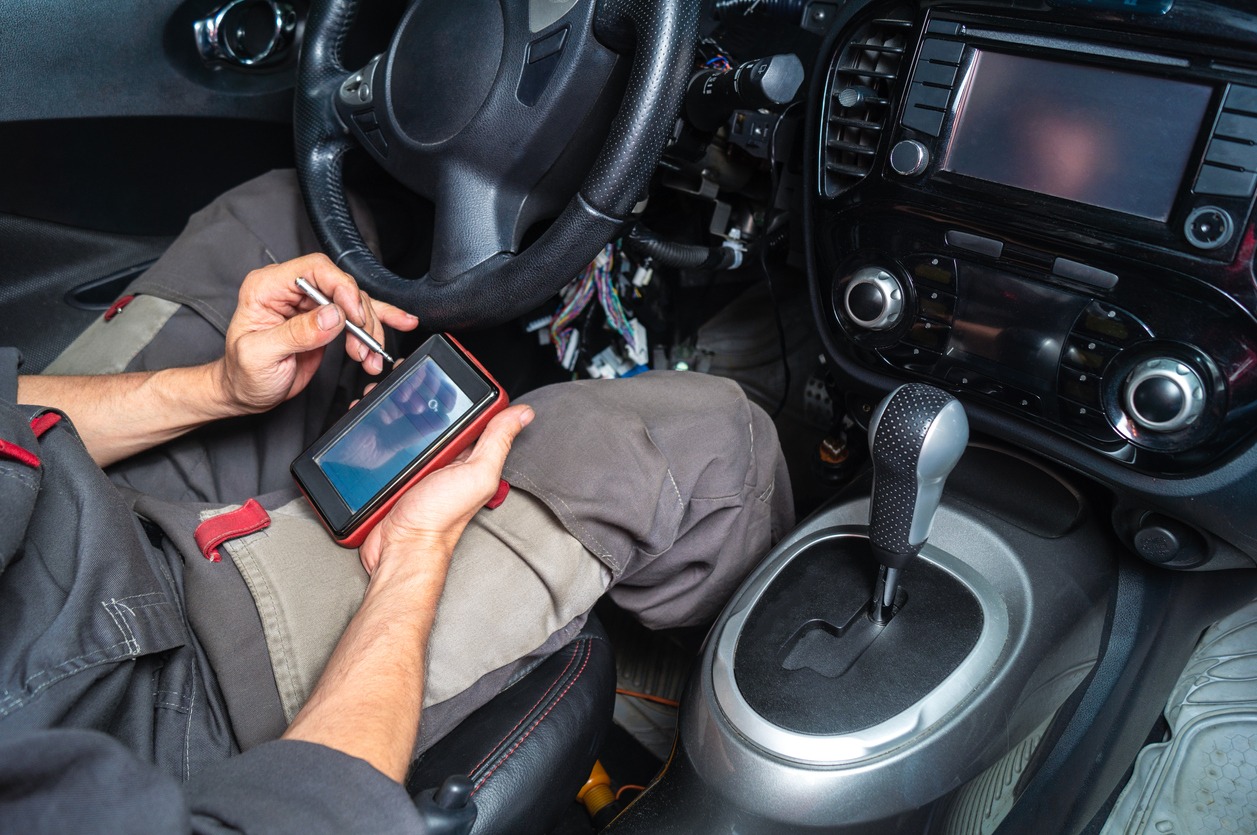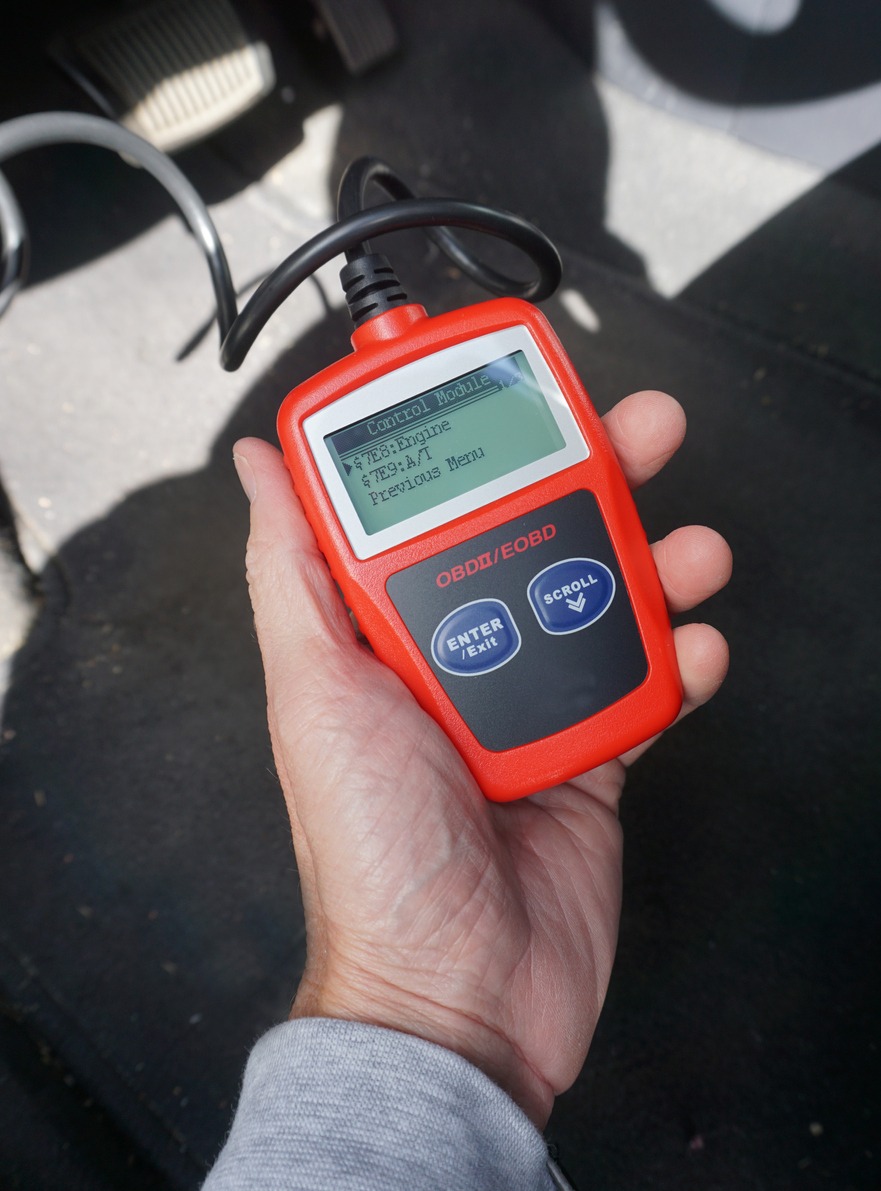What Are OBD2 Scanners?
OBD2 scanners are small pocket-sized devices that you can plug into an OBD port to get valuable information about your vehicle in real-time. These compact devices are very powerful. When they are attached, they show valuable data such as your car’s speed, engine RPM, and fuel efficiency. OBD 2 scanners can also display your vehicle’s VIN number and generic and manufacturer-specific diagnostic codes.
Thus, the information they provide is beneficial. They also reduce the number of trips you need to make to a mechanic because if there is a problem, you can plug it in to receive the diagnostic code. Once you search for the code, you can read up on the issue and decide whether a trip to the mechanic is necessary.
OBD 2 stands for On-Board Diagnostic II and is the second generation of onboard self-diagnostic equipment requirements that light and medium-duty vehicles need. Although the cars sold today are cleaner than ever, the sheer number of them on the road is responsible for creating smog.
In California, certain cars must have OBD 2 to lower emission levels. Newer vehicles in the region often start out with low emissions. However, over time improper maintenance and faulty components can lead to a sharp increase in emissions. OBD 2 scanners work to reduce these emissions and aim to keep the vehicle as clean as possible throughout its life.
All 1996 models and newer gasoline and alternate fuel passenger vehicles must have an OBD 2 system by law. All 1997 and newer models are also needed to meet the OBD 2 requirements. Suppose you are still determining whether or not your vehicle is equipped with OBD 2. In that case, you can search for the word OBD 2 on the emission control information label. This label is usually on the underside of the hood.
According to the United States Environmental protection Agency, all cars during and after 1996 are required to meet the US EPA OBD requirements. Therefore you should always check local laws before you purchase and use one.
How Do OBD2 Scanners Work?
OBD 2 scanners work as an interface between the reader and a mobile app to facilitate fault finding and troubleshooting in a vehicle. Most modern cars have pre-installed software that produces the data required by OBD 2 scanners. When the scanner presents the information, you can interpret it. If you do not recognize the diagnostic codes, you can use a search engine to search for them.
This data can be accessed through an OBD 2 port. This port is found below the steering wheel. Once you have connected the scanner to the port, you can use an OBD 2- compliant dongle to provide smartphone access to the data. This can also be done through Wi-Fi.
How To Use OBD2 Scanners?
To use your OBD 2 scanner, the first thing you must do is locate the port. This port can usually be found below the steering wheel. Once you have located it, you can connect your wireless scanner. Ensure that the ignition switch is turned on. You don’t need to turn on your engine.
Next, you must pair the OBD 2 scanner with your phone through Bluetooth. To do so, open the scanner’s mobile app on your phone. You will need to set it up and provide vehicle data when using it for the first time. This data can include the make, model, and year of manufacture.
Once the initial setup is complete, you can use all the features that the OBD 2 offers. There are different kinds of OBD 2 scanners and readers. Some can only show stats on essential functions, including engine-related faults, and only show definitions for the codes. Other OBD 2 readers have much more advanced features, including live parameters, diagnostics for all functions of the car, car coding, DIY maintenance, etc.
When performing a diagnostic, the scan tool you use must first read your car’s error memory. Then the scanner will assess the vehicle’s control unit and analyze the data it receives. Although some data may not be relevant, the system is required to scan all data.
After the scan is concluded, the app will show you a list of error codes affecting the vehicle. You may need to visit a mechanic if they are ambiguous, and you need to know what they mean.
These error codes are structured according to a uniform principle: one letter and four numbers. The error codes are designed to contain information from the sensors and electronics in these areas:
| Code | Meaning |
| P | Powertrain |
| C | Chassis |
| B | Body |
| N | User Network |
Once you have identified where the error is, the second digit tells you the error code group.
0 means it is a manufacture-independent error, and 1 means manufacturer-specific error.
The third digit tells you about the vehicle assemblies pertaining to the error.
| Number | What it refers to |
| 0 | Overall system |
| 1 | Secondary air/ air mixture preparation |
| 2 | Fault in the fuel system |
| 3 | Ignition system |
| 4 | All additional systems for emission monitoring |
| 5 | Cruise or ideal speed control |
| 6 | Computer and its input/output signals |
| 7 | transmissions |
How To Choose an OBD2 Scanner
An OBD 2 scanner is a handy device for mechanics because it can easily identify errors. However, you should select your onboard self-diagnostic system with care. You should know the tool’s primary purpose, meaning what you will use it for. If you are using it for basic tasks, you should not purchase one with fancy features. On the other hand, if you are an enthusiast who wants all the features, you should buy one with all the different diagnostic tools.
You should also consider certain features to purchase one that best fits your needs.
Vehicle Compatibility
The most important feature to consider when purchasing a scanner is its compatibility with your vehicle. Only some scanners are compatible with all kinds of cars. Therefore, you should ensure that the scanner can easily be attached to your vehicle. Usually, this concern arises if you own luxury or European cars.
Sometimes the OBD 2 scanner may be compatible, but only some of its features may work. Therefore, if you are planning to purchase a scanner with many additional features, check the product description on the page. It should be fine if your vehicle is listed there. You can also contact the manufacturer to confirm whether the OBD 2 scanner will work with your car.
Ease of Use
You must ensure that the OBD 2 scanner you purchase is easy to set up. If it is, you may use it sparingly. Thus, you must choose an easy-to-use OBD 2 scanner so that an issue can be diagnosed earlier and you don’t get stuck in a roadside emergency because of it.
Functions
All OBD 2 scanners are made differently. Some are designed to read engine codes, while others can also read transmission and ABS codes. Other models also have the ability to perform checks on specific components of the vehicle, giving you the peace of mind that your car’s electrical system is working well.
Assessing your needs before purchasing an OBD 2 scanner is essential. Due to the sheer number and types available, you must look over the functions you want and buy a scanner accordingly.
Connection Types
Two kinds of connections exist for OBD 2 scanners, wired and wireless. There is a massive debate on whether you should opt for wired or wireless. However, there are pros and cons for each.
Wireless OBD 2 scanners have their own battery, so there is no need for cords, which often come in the way if you are working in the engine bay. You also don’t need to plug them in at all times, so you can move them around without unplugging them.
You don’t need to worry about batteries if you have a wired OBD 2 scanner. Nothing is worse than a dead scan tool when you need to identify an issue. Wired scanners use power from the car battery, meaning you don’t need to worry about dead batteries.
Pricing
There is no flat rate on OBD 2 scanners because the price varies greatly depending on your desired features. The more expensive a scanner is, the more information it will provide and the more tools it will have. They can cost anywhere from $30 to $500 and sometimes even more.
| Price | Features |
| Under $60 | For this price, you can get a basic and efficient scanner. These scanners will be able to identify a large range of OBD trouble codes and even perform emission tests. You may need to pay extra for updates. |
| $100 to $200 | For this price, the scanners have a wide range of functionality. You can get live data and monitoring of the airbag systems and ABS. Most scanners in this price range are wireless, which can use your phone’s screen to show the codes and solutions. Choosing a wired scanner with similar functionalities will cost you more. |
| Over $200 | Scanners that fall in this price range include those that offer the widest range of features. These scanners can read advanced codes and offer SRS transmission and ABS monitoring. These scanners are also extremely accurate and have fancy design features like large touch-screen displays. |
Live Data
When choosing an OBD 2 scanner, purchase one that offers live data. This feature can be invaluable when you need to know what is going on in your vehicle. Live data provides valuable information, such as the number of times a particular cylinder may be misfiring. It can also let you know the amount of air the intake brings in.
You can pinpoint and address the issue if such information is available. Experienced mechanics can also use live data and engine codes to determine the exact problem before checking other parts for confirmation.
Transmission/SRS/ABS Scanning
When buying an OBD 2 scanner, you should ensure that it comes with various features. Many car owners believe a check engine light is enough to keep their vehicle out of danger. However, OBD 2 scanners can check every system in your car to give a much more nuanced picture of the issue. Features such as ABS, SRS, and Transmission scanning are invaluable tools for mechanics and enthusiastic car owners.
Troubleshooting Tips
Often, problems in your vehicle leave you stumped because you don’t know how to solve them. Therefore, there are databases that are filled with information that can help you resolve these issues. Many of these databases are behind paywalls, but some are free.
Suppose you need clarification on what a specific code means or how to fix it. In that case, you can go to these databases and find relevant information that will guide you in the right direction. Thus, you should purchase an OBD 2 scanner that automatically inputs your vehicle information and problems into databases and provides a solution.
Connectivity
Many OBD 2 scanners have a companion app that makes using the scanner extremely easy and convenient. You can connect your scanner to your phone and keep a record of all the errors the scanner has ever detected. By having an app on your phone, you can also read the diagnostic results and find a solution.
Some apps are also designed to provide you with a guide on how to solve particular issues. However, not all apps are free. Some require you to purchase the app, while others require you to pay a subscription fee every month. Ensure that the scanner you are buying comes with a free app or has one with a one-time fee. This helps maximize savings.
OBD 2 scanners that work by connecting to your phone need either Wi-Fi or Bluetooth to connect. A Bluetooth connection is more stable for Android devices. In contrast, a Wi-Fi connection is preferred if you own an iOS device.
Generally, Bluetooth devices consume less power. Thus, you may want to opt for a Bluetooth-connected OBD 2 scanner if you are always moving and prefer to conserve energy on your devices.
It would also be best to consider how often your OBD 2 scanner updates its database. Ideally, choose one that offers regular upgrades because it can easily pick up new error messages. It can also save you time and money as not all issues require taking your car to the mechanic.
Pros and Cons of OBD 2 Scanners
| Pros | Cons |
| It helps save time and money by reducing unnecessary trips to the mechanic. | It can cause a battery drain when connected to your car for power. |
| It allows early diagnosis of a malfunction. | There is a risk of your data being hacked and used for malicious purposes. |
| It can enhance a driver’s safety. | It may interfere with other electronics in your vehicle. |
| They are highly compatible across various vehicles. |
|
| They can help reduce pollution. |
|
Brands
When purchasing an OBD 2 scanner, choose one from a well-known brand. Such brands usually take care in making their products and ensure that they are the best they can be. Additionally, they are often durable, use the latest technology and have warranties. Some popular brands include Innova, BlueDriver, and Foxwell.
Innova
Innova is a California-based company that manufactures some of the most affordable OBD 2 scanners. They are straightforward to use and work with a variety of cars. Innova’s diagnostic tools can be used by both beginners and experts because of their extensive range of features. You can also pair them with your smartphone using an app.
Some popular models include the Innova OBD 2 scanner and the Innova CarScan Advisor 5210.
BlueDriver
BlueDriver’s OBD 2 scanners are perfect for those who want a minimalistic car diagnostic tool. It is wireless and has no cords because it connects via Bluetooth to your phone and displays all the information there. These scanners are extremely easy to set up and use. BlueDriver’s scanners also offer the option to get live data feedback which is excellent for checking your vehicle’s running condition. Some popular models include the BlueDriver Pro OBD-II Bluetooth Car Diagnostic Scan Tool and the BlueDriver Bluetooth Pro OBDII Scan Tool.
Foxwell
If you are new to OBD 2 scanners, then a Foxwell scanner will be the best for you. These scanners have compact designs and are extremely easy to use. You get quick results and the option to see live data. These scanners also have emission test capabilities. Some popular models from this brand include the Foxwell NT614 Elite and the Foxwell NT301 OBD2 Scanner.
FAQs
1. Do OBD 2 scanners work on all cars?
Not necessarily. Not all OBD 2 scanners work on all vehicles, so you must ensure that an OBD 2 scanner is compatible before purchasing it. You can do so by checking the product description or contacting the manufacturers.
2. What is the difference between cheap and expensive OBD2 scanners?
Cheaper OBD 2 scanners can only read the issue and inform you of the error. More expensive ones allow you to go deeper and scan all the various parts of your car and even provide solutions to the problems.
3. How much do OBD 2 scanners cost?
OBD 2 scanners have come in a wide variety that offers different functionalities. Therefore, you can get one as cheap as $60 or even below or a super expensive $500 one.
Conclusion
Buying an OBD 2 scanner can save you a lot of money and time because you don’t have to rush to a mechanic whenever you face an issue. You can look up the error code and see whether or not you can resolve it yourself.
If you keep a few key features in mind, such as your use, price, functions, and connectivity, you will be able to purchase a scanner that will serve you best. Be sure to check local laws before you purchase and use one.
